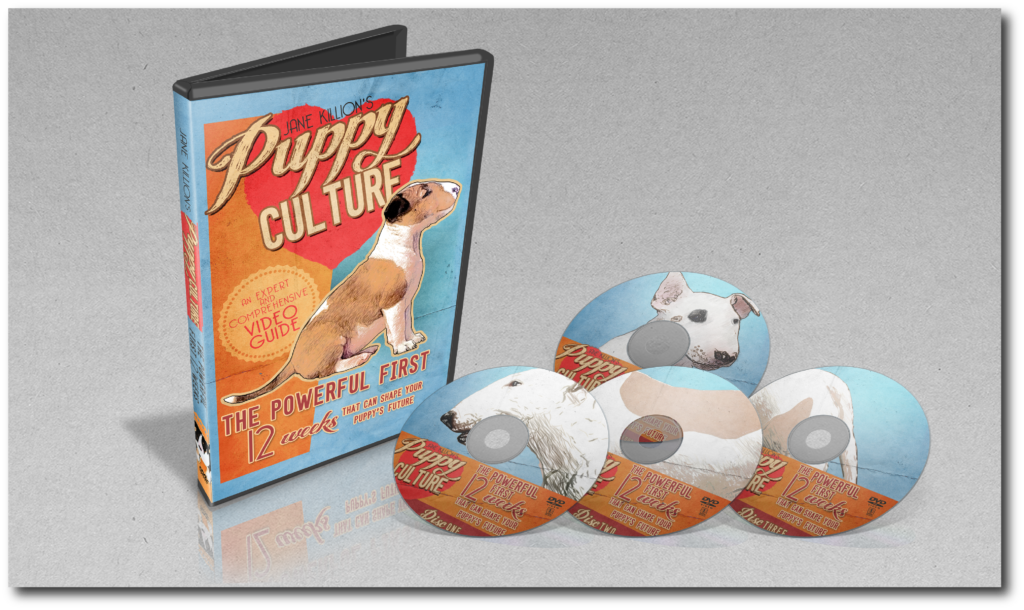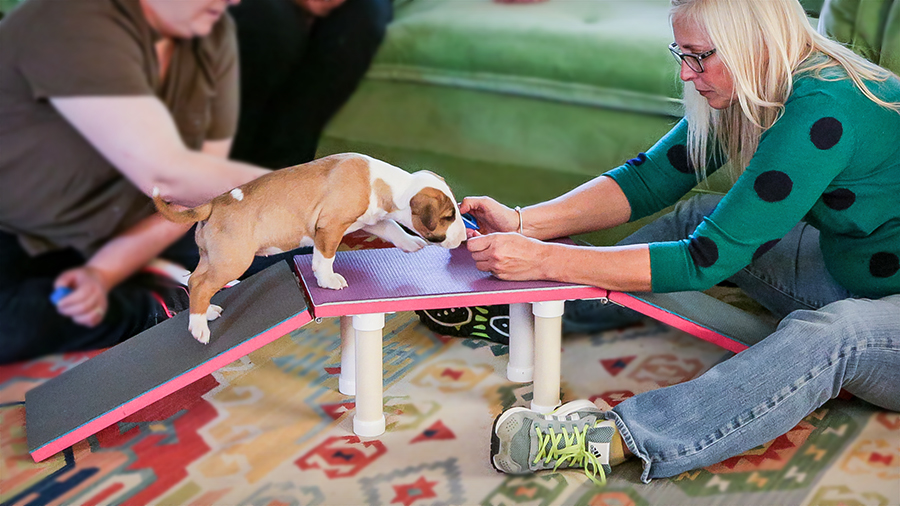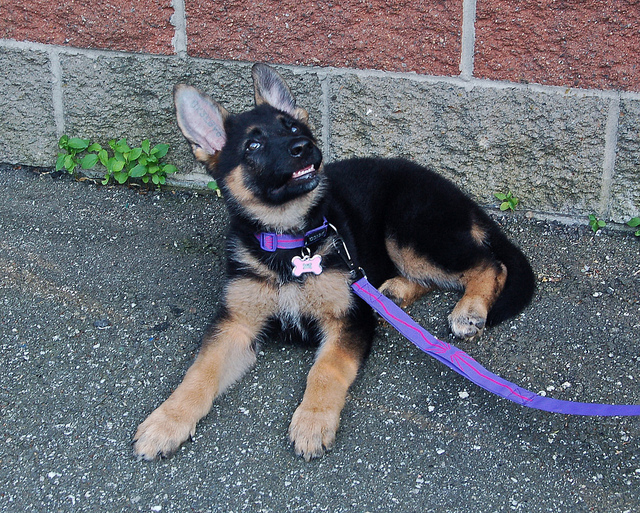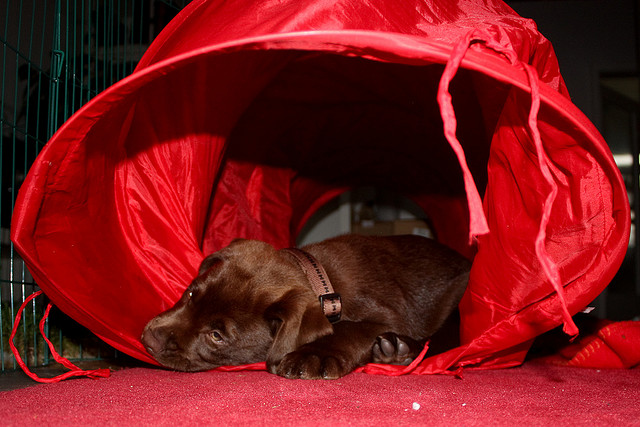Those first several weeks when you bring your puppy home are the most critical when it comes to socializing. If your puppy came from a reputable breeder, they should have received desensitization and environmental stimuli training from the day they were born. Unfortunately, most puppies do not come from an ideal environment, which makes what you do even more important. The following are ways you can help foster confidence in your puppy, making them less likely to develop problems later on. These are things you should do for at least the first 12 weeks of a dog’s life – ideally they should be done through adolescence (roughly 18 – 24 months).
#1 – Keep It Positive
As some of you are aware, unfortunately, all it takes in one bad experience to make a puppy fearful of kids, cars, dogs, for the rest of their lives. Jane Killion, professional dog trainer, breeder and the mastermind behind Puppy Culture, a DVD series on how to raise confident puppies, stresses that “all experiences for a young puppy should be carefully planned and controlled in order to avoid any ‘bad’ experiences.” Positive experiences are key!

#2 – Make Sure It’s Puppy’s Choice
It is so important to remember it’s not how you feel about the situation, but your puppy. As Killion puts it, “It’s the puppy’s choice to have the experience that builds confidence, not the experience itself. Your puppy should never, ever, be in a position of being terrified. And if he is at all hesitant, let him make the choice of whether or not he wants to move forward into a situation, towards a person, or to another dog. One step that a puppy takes on his own is a huge confidence builder. Exposure where the puppy has no choice and is scared is not only not a confidence builder, it can create a feeling of panic and helplessness.”
So make sure you are always giving your puppy a choice and not forcing him.

#3 – A New Day, A New Place
To have a dog that is used to new environments means your puppy needs to be exposed to them. The best thing you can do is take your puppy somewhere new each day. Even if they don’t have all their shots, they can go for a car ride and be carried through a store or at a park. These trips should be short, 10 minutes is enough, and remember they need to be POSITIVE!

#4 – Control The Environment
Part of making sure things are positive and avoiding potentially bad experiences includes controlling as much of the environment and the things your puppy is exposed to as possible. This is why Killian suggestions Puppy Culture’s signature “playdate” instead of the dog park (where you cannot control what type of dog is going to run up to your puppy) and “puppy parties” instead of letting strangers crowd him at the mall (where you may not be able to control how they touch or talk to your puppy).

#5 – Stimuli Exposure
When your pup gets home, start getting him used to all the things he may encounter through life in a positive way. This means playing music, action movies, firework tracts, city noise, etc., Have surfaces he can walk across that are different, like carpet, tile, painted wood, etc. Have wobbly things to walk over and things to walk under. Handle your puppy daily – making sure you touch him all over. Do all of these following the rules above about keeping it positive (treats and play are great ways to help that!) and always giving your puppy a choice. Want an agility dog? No time like the present to get them used to the bang of the Teeter! Victoria Stilwell has a great set of noise CDs to help with noise desensitization.

